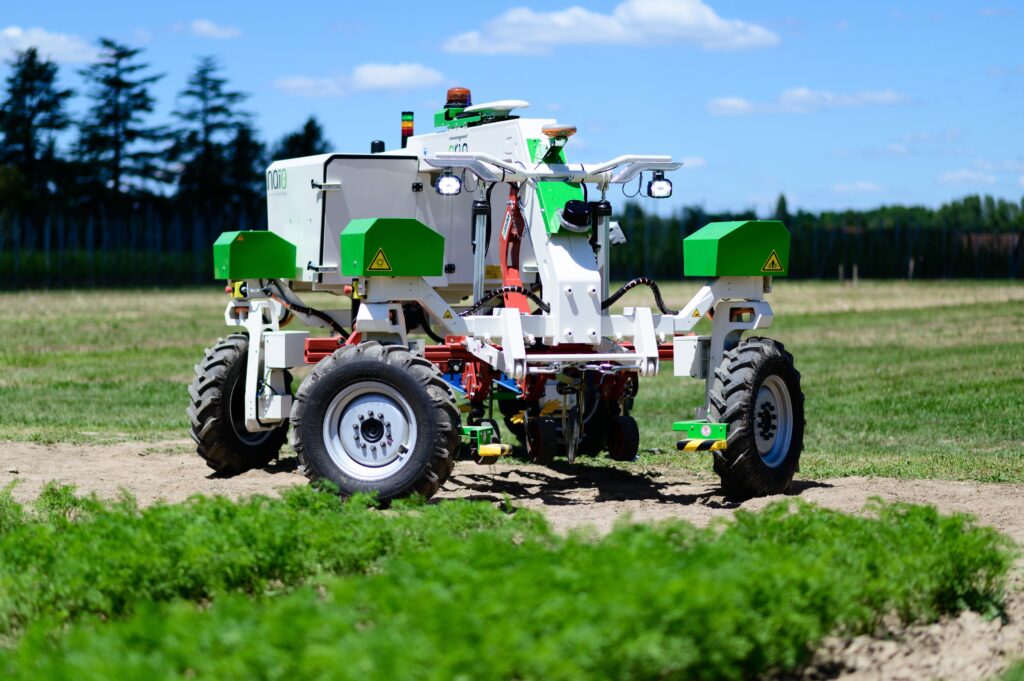LiDAR technology gives Naïo robots lay of the land
 Imagine a robot that can go through a farmer’s field, weeding between the plants. In order to function smoothly, it would need to distinguish between clumps in the soil and any potential obstacles it could encounter. And the robot would have to master this task in what is, by its very nature, a difficult, dusty environment. Or perhaps a wet and muddy environment. In fact, that environment could change from one to the other in the space of a summer shower.
Imagine a robot that can go through a farmer’s field, weeding between the plants. In order to function smoothly, it would need to distinguish between clumps in the soil and any potential obstacles it could encounter. And the robot would have to master this task in what is, by its very nature, a difficult, dusty environment. Or perhaps a wet and muddy environment. In fact, that environment could change from one to the other in the space of a summer shower.
Modern robots are now out in the fields, making contemporary farming operations more efficient and profitable. No matter if it is raining, snowing, hot, or dusty, state-of-the-art 3D LiDAR sensors help these robots to handle the complicated topography of a typical farmer’s field.
Orio, 3D LiDAR Robot: autonomous robot in farmer fields
Combining information from RTK GPS with information from the MRS1000 3D LiDAR sensor, Orio actively avoids any and all obstacles such as weeding rows of lettuce, onions, carrots, parsnips, cabbage, leeks, cauliflower, or various herbs (garlic, cilantro, mint, etc.) to name just a few.
Orio was developed by Naïo Technologies, a young and innovative agricultural robotics company that develops, builds and markets intelligent, autonomous systems dedicated to agricultural applications. Founded in 2011 by two engineers Aymeric Barthes and Gaetan Severac, Naïo Technologies is passionate about developing technologies that support sustainable agriculture in a cost-effective and environmentally friendly way. Working in close collaboration with farmers, Naïo provides solutions that tackle farm worker shortage, reduce the strenuous physical workload, and limit the use of chemical weed killers.
Availability from MRS1000
Working together with SICK, the Naïo engineers chose the MRS1000 for its robot. The ground should not be detected as an obstacle, especially when moving across humps in the field. The MRS1000 carries out simultaneous measurement on four layers, providing a very high level of measurement accuracy. Even in harsh outdoor environments, the performance of the sensor has proven to be excellent. This reliability means that these robots can keep on working with only minimal interruptions, giving the farmer a high level of availability.
The MRS1000 provides a wide field of view which makes it easy to cover the complete surrounding of the vehicle. Additionally, the sensor also comes with built-in field evaluation functionality and a digital I/O connection option. This makes it possible to connect the sensor to the robot with a slightly modified software version so that it can effectively detect and avoid obstacles from day one.
SICK has been working very closely with Naïo Technologies right from the very beginning. That excellent working relationship and the reliability of the MRS1000 in harsh outdoor environments are just some of the reasons why Naïo Technologies is planning on using SICK sensors for other projects. Autonomous mobility for outdoor agricultural applications is a challenge that SICK sensors have mastered in the past and one they will master in the future.







